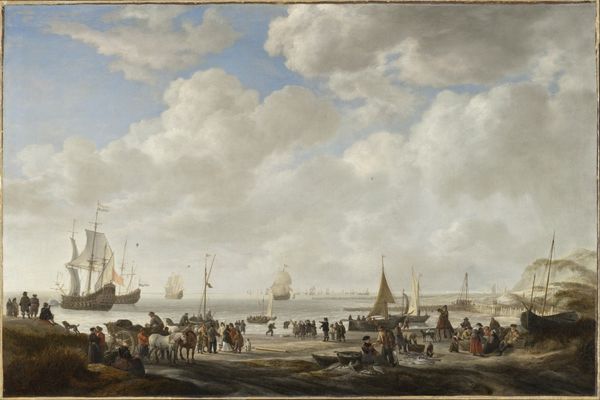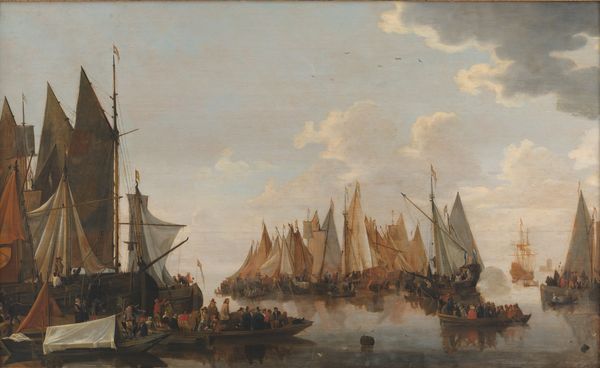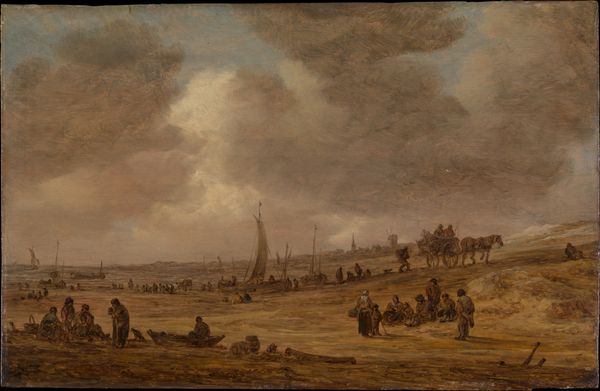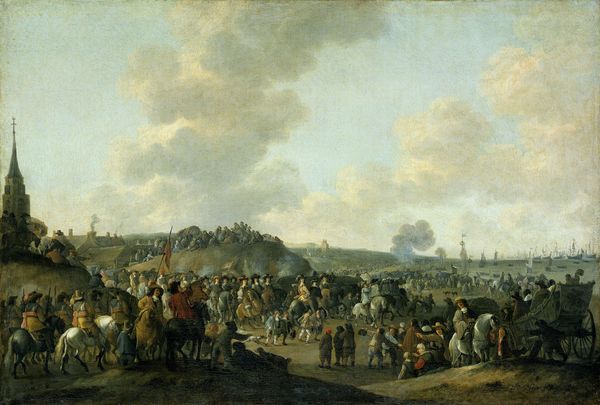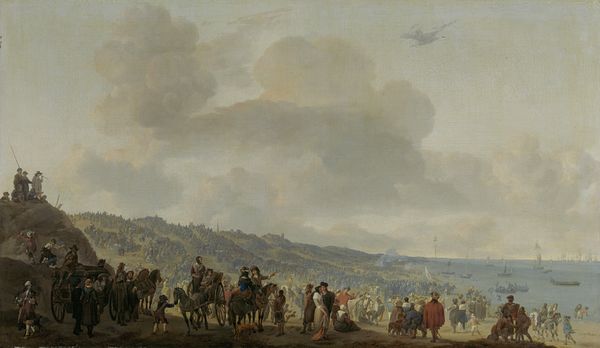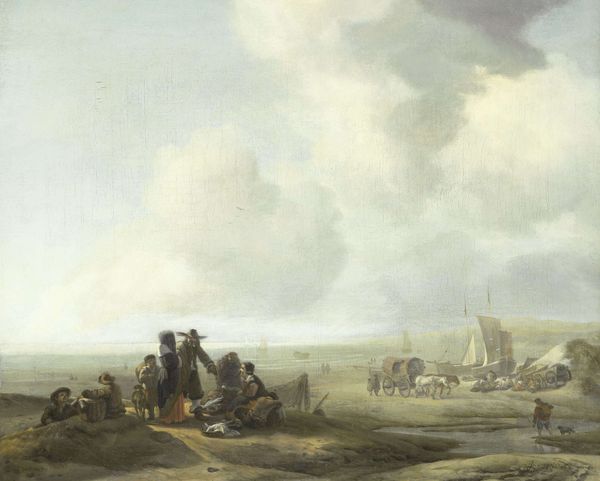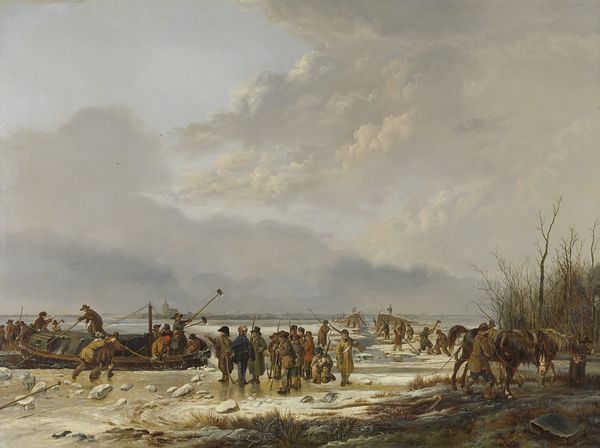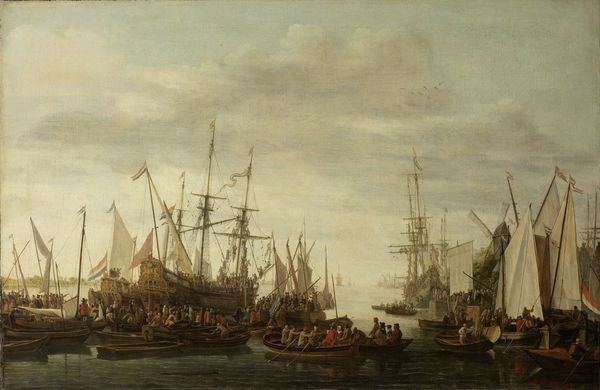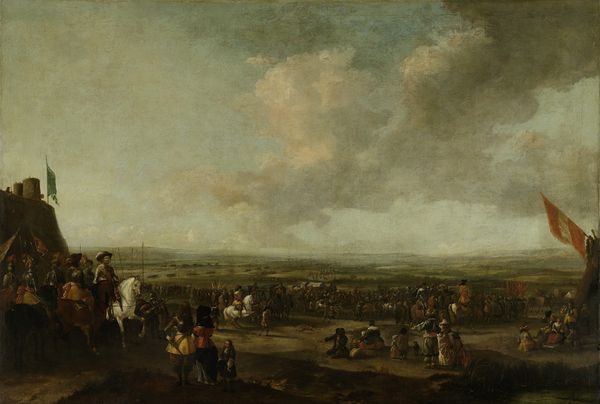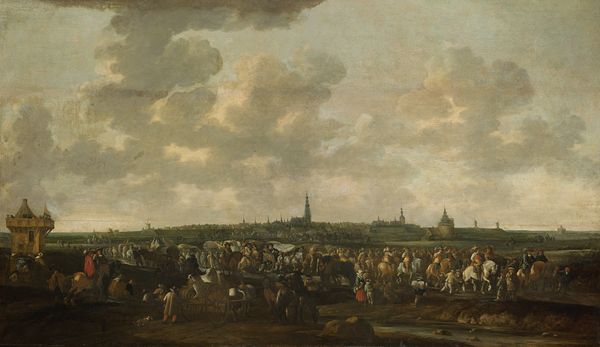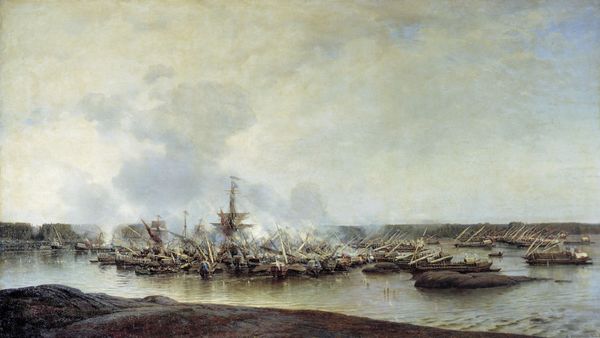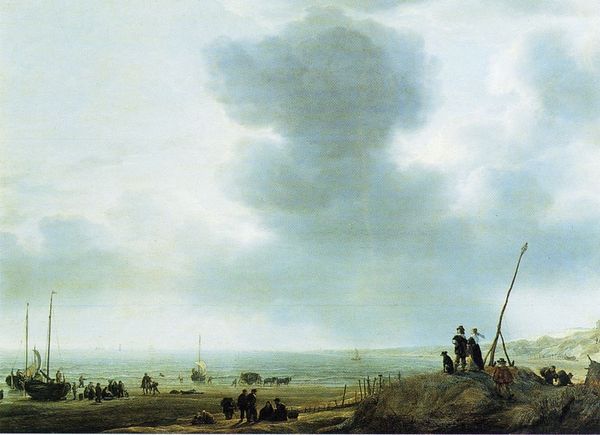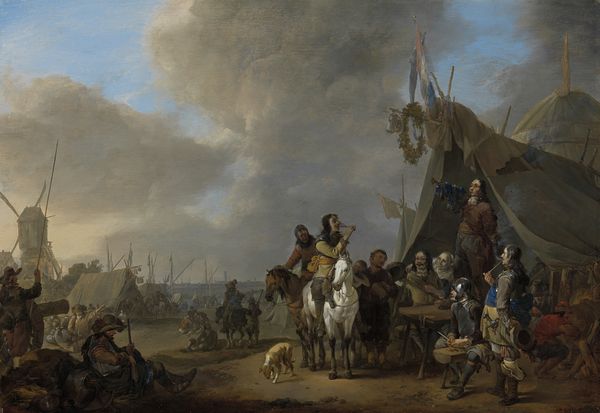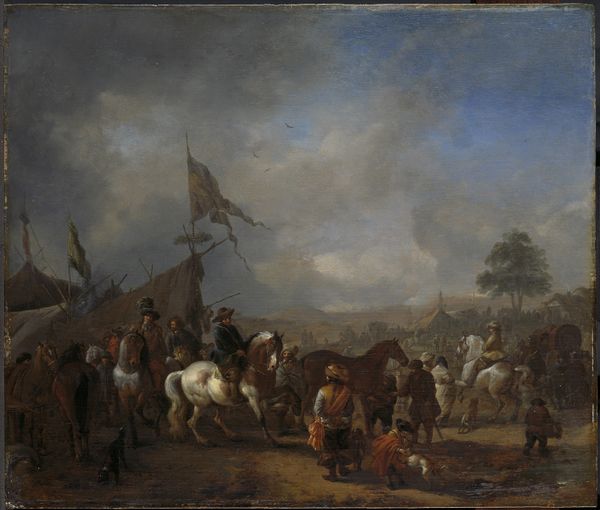
The Siege and Capture of the City of Hulst from the Spaniards, November 5, 1645 1645
0:00
0:00
painting, oil-paint
#
baroque
#
dutch-golden-age
#
painting
#
oil-paint
#
landscape
#
oil painting
#
cityscape
#
history-painting
Dimensions: height 94 cm, width 154.5 cm, depth 5.5 cm
Copyright: Rijks Museum: Open Domain
Curator: This is Hendrick de Meijer's "The Siege and Capture of the City of Hulst from the Spaniards, November 5, 1645," painted in 1645. Editor: What strikes me immediately is how…beige it all is! It has this kind of muted palette despite depicting something so explosive as a siege. I'm drawn to the materials visible in the foreground; it really focuses my attention on how such a military endeavor would be sustained with all those horses, carts and boats on the river. Curator: The beige, as you say, certainly mutes any romantic notions of glory in battle. Hulst endured multiple sieges, reflecting its strategic importance. Its capture by the Dutch represented a triumph over Spanish power, therefore the Dutch flag is flying at the encampment on the shore, almost centrally-positioned in the overall scene.. The image certainly highlights a moment of transition, that of victory. Editor: Transition yes. Thinking of all those carts and animals. How labor intensive to transport things! How crucial the waterborne transportation! It looks like it was done on oil paint which must be precious material at that time and it’s still striking that those subtle brushstrokes captures a whole industrial endeavor! Curator: I’m intrigued by the details; small groups of people in what seem like personal exchanges amid the backdrop of warfare. It humanizes the event, making it more about the collective effort and less about individual heroism. Notice also the city silhouette is clear, but somewhat distant. Hulst is more of a prize. Editor: And one won through very specific, material means. Look at how much time and care it took to organize a boat or wheel production! When we romanticize historical victories we usually obscure the labor and toil it involved for all social strata involved in the process. Curator: Precisely. By avoiding bombastic representation of battle scenes, and focusing instead on the organizational aspect, it invites a kind of contemplation of human endeavor at large, and the burdens as much as glory, through history. Editor: Definitely gives me pause to think about the real cost in resources when viewing triumphant cityscapes from above the social ladder; the work behind the historical drama. Curator: It’s an interesting meditation, isn't it? On the power dynamics, material resources, and collective energies at play in what, at first glance, looks like just another Dutch landscape painting.
Comments
No comments
Be the first to comment and join the conversation on the ultimate creative platform.
